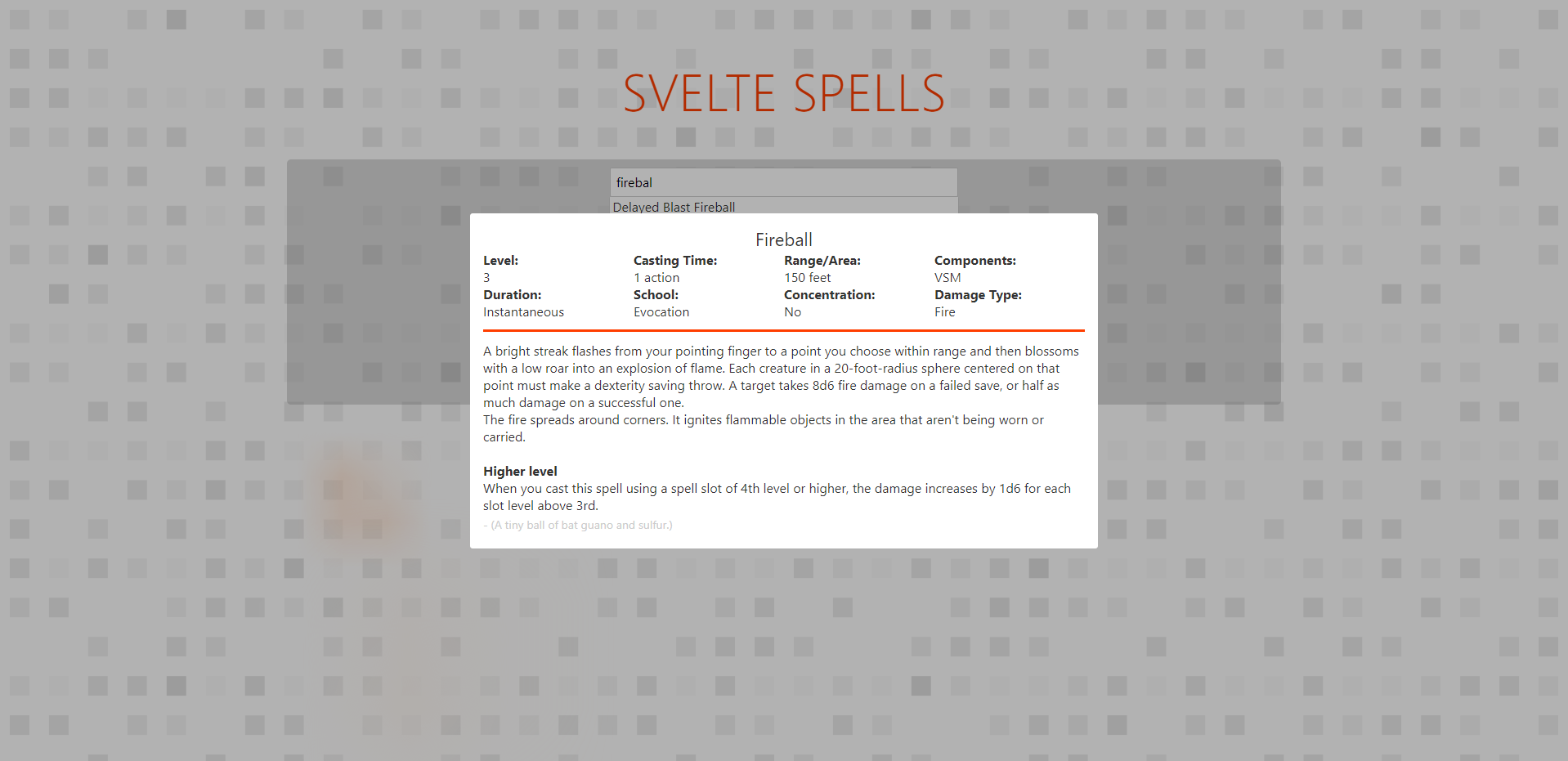For those who don’t know, I am currently working as a Frontend Engineer and I’m always keeping my eyes out for new technologies. Svelte has been on my radar for a while, but I haven’t had the time to dive in and take a look. So I thought I’d document my process of learning about Svelte in comparison to (mostly) React. Which is the library I use day-to-day at work, and the one that most of my projects run on.
Getting Started
The first thing I did was head over to the Svelte website and start the interactive tutorial. The interactive tutorial gives a very high-level overview and is one of the best interactive tutorials I’ve ever seen. After that, I set out to build something super simple that isn’t a to-do list. I find that the best way to learn a new technology is to use it, which is why building something is usually the first step I take when trying out something new. I decided on a super simple app to look up DnD Spells and then display info about them in a modal. You can find the repo here.

Impressions so far
After building the app with Svelte I have my first impressions. I’ll go over everything that stood out to me. First off, variables in Svelte are reactive by default. This means when you need a stateful component, you don’t need to do anything extra.
/* Svelte Example */
let name = 'Tyler';
/* React Example */
import { useState } from 'react';
const [name, setName] = useState('Tyler');In both cases, the variables name is stateful and will trigger DOM updates. In my opinion, Svelte’s way is cleaner and easier to understand.
It should be noted that in Svelte DOM updates are only triggered when variables are assigned. Meaning if your state includes objects or arrays updating them with built-in methods will not work. They show how to handle this in their documentation here.
Another feature of Svelte I like is the on: directive. The on: directive is how Svelte listens for DOM events and they can be modified with event modifiers. I didn’t get the chance to dive into those when building my DnD app, but they look very interesting and I can’t wait to visit them in the future.
Let’s get into something that I wouldn’t say its bad, but I found it frustrating. The {#each} block. Normally in most cases the format of a foreach or for loop goes as follows for(let thing of thingYourInteratingOver) however in Svelte they flip-flop the thing and thingYourIteratingOver.
{#each thingYourIteratingOver as thing}
<p>{thing.value}</p>
{/each}I had to revisit the {#each} block every time I used it due to the fact my brain was not used to this. While I’m sure I would get used to this if I was working in Svelte more, it was annoying this first time using it.
🔥 Rapid Fire Thoughts 🔥
That was everything that stood out to me upon first use. Here are a few more quick thoughts I had just from going through the tutorial, but didn’t get a chance to use during the app. I’ll be sure to come back and edit this post if these thoughts change or point to a new post where I clear up my thoughts.
- Stores seems easier to use
- Context seems easier to implement but is less powerful than its counterpart React’s Context API
- Lifting state is less of a hassle
- Built animation tweening and motion is awesome
- Writing templated HTML as opposed to JSX is a nice refresher
- Lifecycle methods are great
- Dynamic styling is underwhelming and React definitely beats it out in that department
Conclusion
Exploring Svelte was very fun, and I’m super excited to see how it evolves in the future. I’m not sure I would use it for a large project at the moment. However, it will most likely be my go-to for building small, less complex projects.